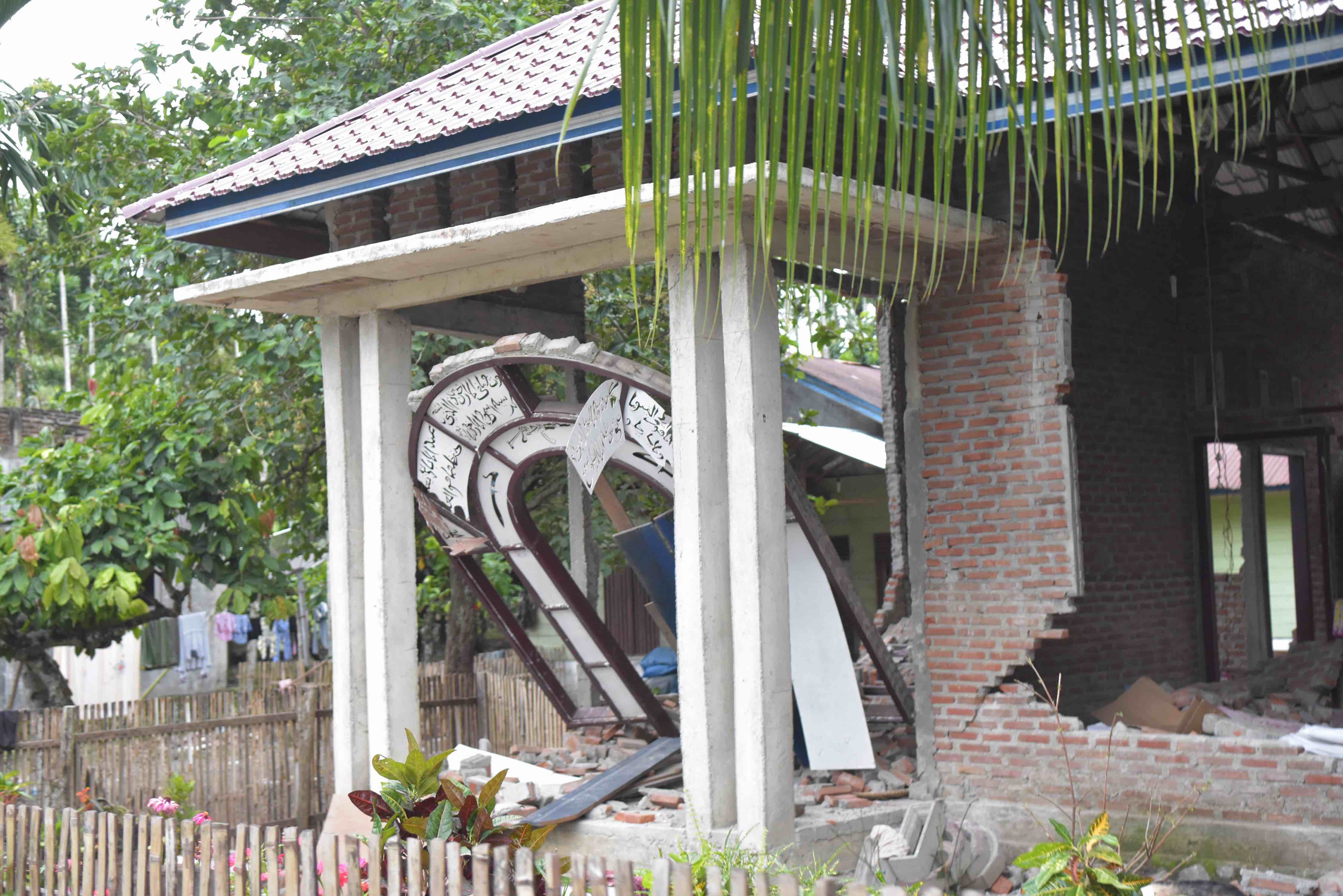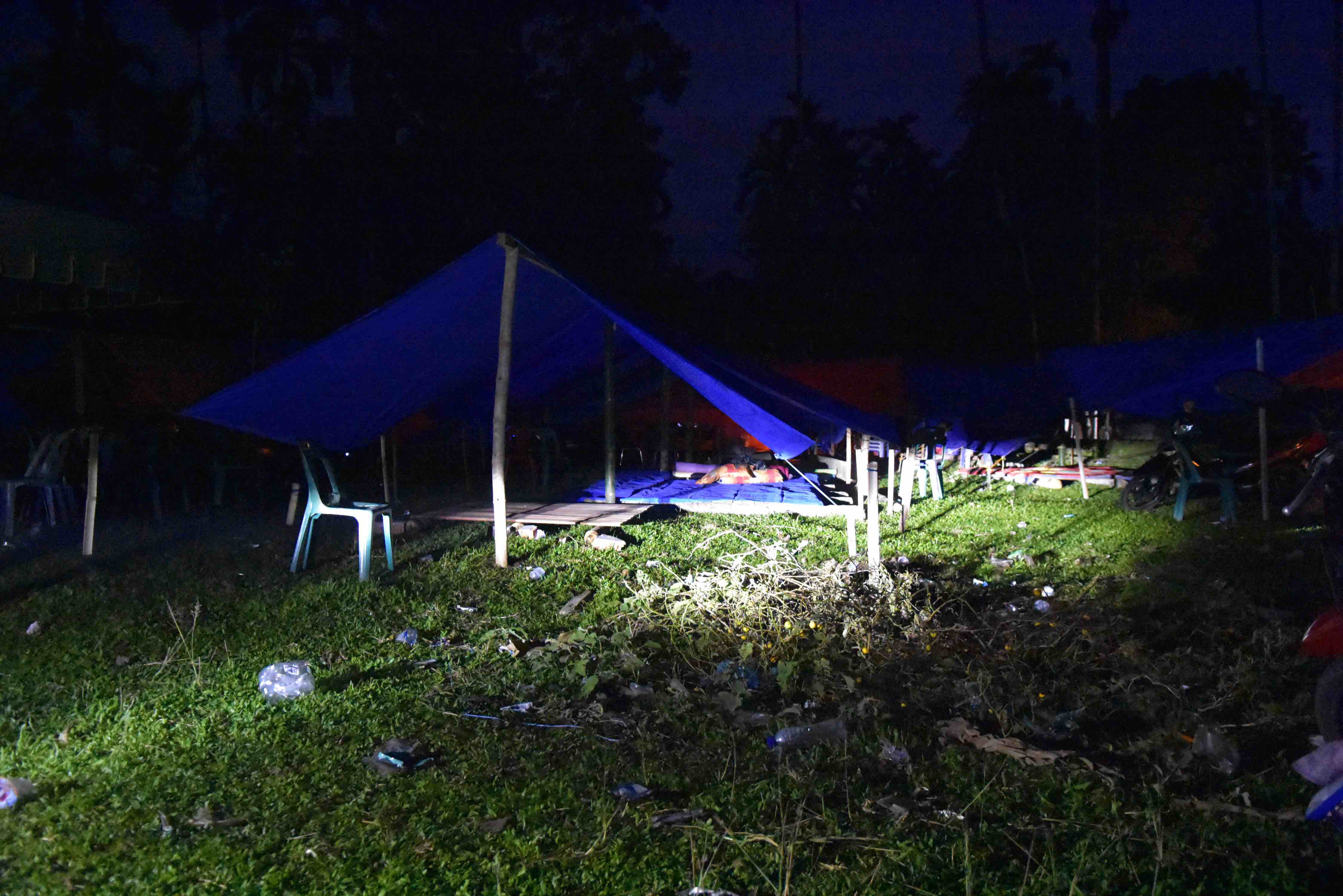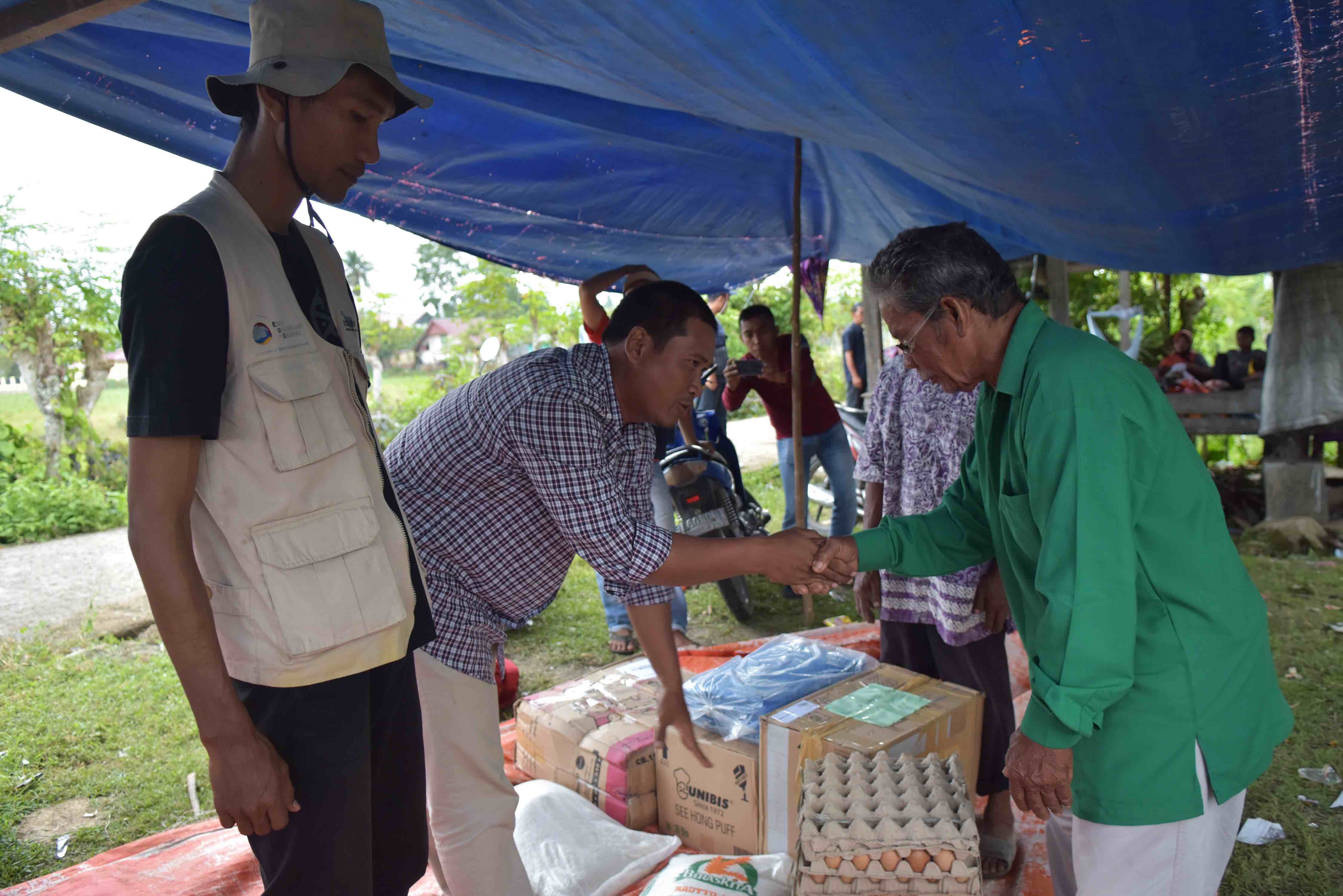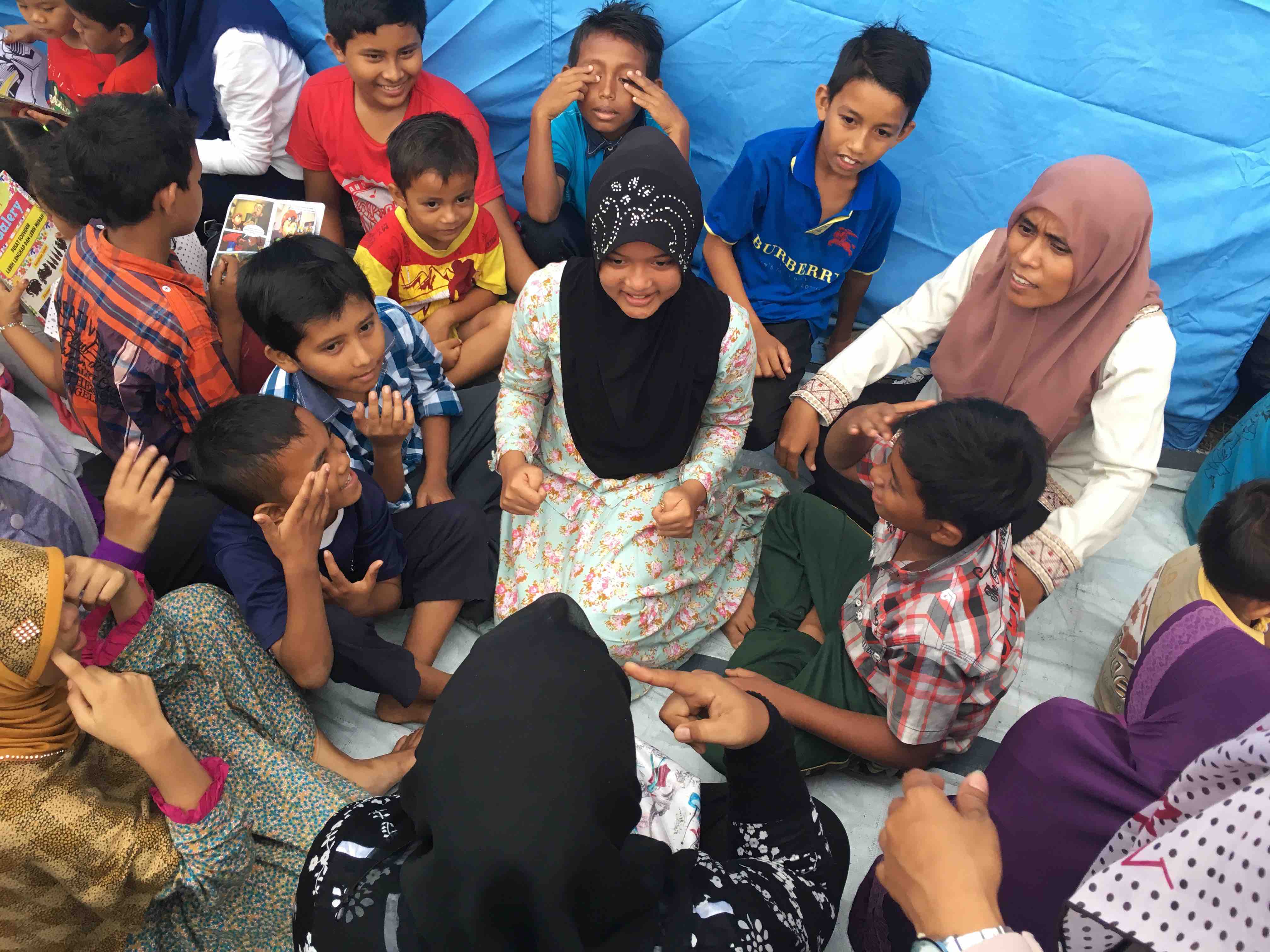
At just past five o'clock in the morning on 7 December 2016, a damaging earthquake struck Aceh, Indonesia. Damage was most severe in Pidie Jaya and neighbouring Pidie and Biruen Regencies, located east of the provincial capital of Banda Aceh. Extensive building damage tragically led to the loss of more than 100 lives. More than 80,000 people are displaced, unable to return because of destroyed or damaged buildings. People fear returning to their homes and community buildings because the aftershocks keep coming.

On both the Aftermath of Aid and Aceh Geohazards projects, the Earth Observatory of Singapore (EOS) is collaborating with the International Centre for Aceh and Indian Ocean Studies (ICAIOS), a joint institute of the three major universities in Aceh. But, this time, ICAIOS has a humanitarian goal. Shortly after the earthquake, ICAIOS team members loaded emergency supplies and headed into affected areas to offer support. We also joined with psychology faculty from the Islamic State University (UIN) Ar-Raniry to provide psychosocial services for children in the affected areas. We found that supplies were already being delivered to the most accessible areas so we decided to go to more remote areas, some 6-12 km from main roads.

In the Balee Ba community, in Meue village, many houses were damaged and four people had died. We provided food, baby kits, female hygiene kits, and other critical supplies. In Gampong Keude, our colleague Nurafni Azhar from UIN Ar-Raniry led psychosocial services for the children. While a disaster is traumatic for everyone, children are particularly vulnerable. It is very important for their mental health for them to feel like they are returning to more normal activities. Returning to school is a good way to do this, but unfortunately many school buildings are damaged. At least 84 schools were damaged or destroyed in Pidie Jaya. It is disturbing to think how different this disaster would have been if the earthquake had happened when the children were in school.

In Aceh, unfortunately, we have had many experiences with disaster. We know that this emergency response phase is just the beginning. There will be many long-lasting challenges to come. It is difficult to imagine with so many people sleeping in tents or without any shelter at all, but we hope that we can rebuild using techniques that make buildings more resistant to earthquakes. We also know that the challenge is not only to rebuild physically, but also to rebuild lives, families, and communities. Our thoughts are with the people of these communities as they face these challenges.
Please follow further updates on humanitarian assistance from ICAIOS.